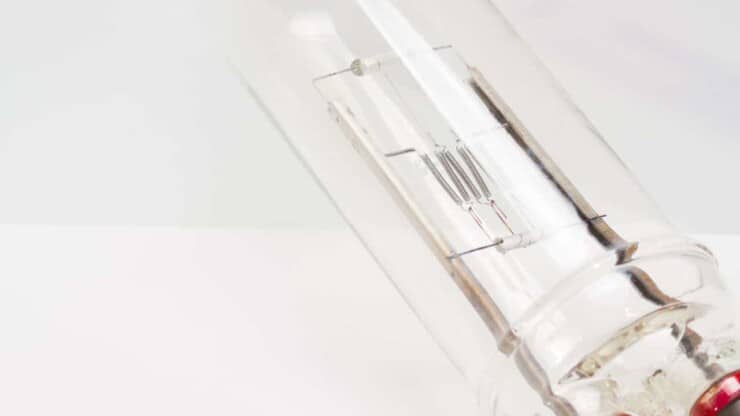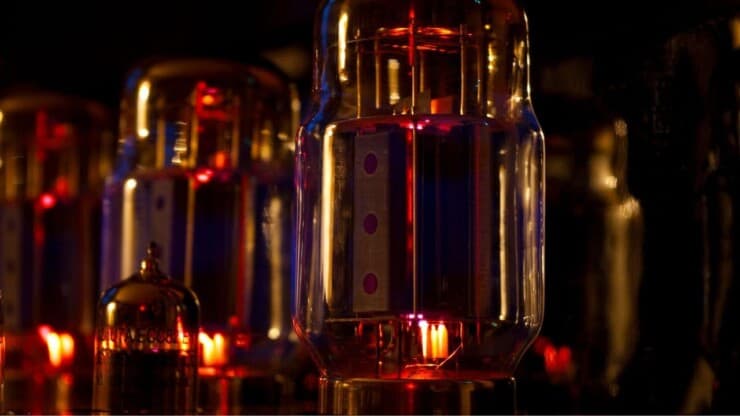Have you been having trouble servicing your tube amp and making it work properly? If so, then you’re definitely in the right place.
Servicing your own tube amp is easy if you know what you’re looking for and where the problem lies. If you maintain your amp and service it regularly, it’ll continue producing exceptional performances for years to come.
In this article, you’ll get to know all about servicing your amps, how to service your own tube amp, how to maintain your amp for better performance, and the how to service your own tube amp PDF that will save the day. Continue reading to get all the answers that you’re looking for.
Basic safety measures to follow with your tube amp
Yes, the guitar is all about letting it rip, but you always need to consider the safety factor. The common safety tips will allow you to get the most out of your guitar rig without damaging it. Moreover, it’ll also help you do that without risking your own safety. As with all electronic devices, liquids are a big no. It might seem tempting to rest your favorite brew on the amp in between solos or during your resting periods.
However, the vibrations produced by an amp make it a near guarantee that your beverage will not stay put. At the very least, it can cause your tube amp to fail. In worst-case scenarios, you could end up getting electrocuted.
You should also want to ensure that you’re making use of a grounded, 3-pronged power supply. While some people might try to clip off the bottom prong or utilize a 2-pronged adaptor, it’s extremely dangerous. In simple terms, you’ve just taken away the electricity’s escape route in the case of a crossed wire. This means that the electricity might want to try and escape through the amp chassis, the guitar, or you.
>>> Click here to read our review about the Top 15 Best Tube Amps <<<
How to service your own tube amp to ensure it is working properly?
With solid-state amps, you’re just switching on the power and playing. The tubes, on the other hand, are a relic from a different electric era. They’re much more temperamental about their power supply. For taking full advantage of their amazing tonal character, you’ll need to deal with their Lo-Fi quirks. The best way of prolonging your power tubes’ lifespan would be to turn the amp on and off correctly. It means giving your tubes ample time to warm up in between consecutive uses. Fortunately, tube amps come with two switches for this very purpose – On/Off and Standby.
For turning your amps on properly, ensure that the Standby switch is engaged. You should set the On/Off switch in the On position before giving it a minute or two to warm up. You’ll see the power tubes inside the amp glowing in an orange-red shade. This means that you can safely flip the Standby switch off and begin rocking. You might notice that the tubes burn considerably brighter when you’re playing. This is the case as they create a tremendous amount of heat energy while producing your amazing tones.
Some amps will allow you to change the amount of power hitting the tubes with the switch marked “Pentode/Triode” or having different watts ratings. It’ll be safest to switch the power supply only when your amp is all the way off. You should remember, tube amps are capable of storing serious voltages. If you mess up with power supplies, it can shorten the tube’s life.
If you’ve got a head and cabinet set up, ensure that the amp head is plugged into a speaker cabinet. By keeping it plugged in always, you’ll be able to avoid damaging the output section of the amp. More importantly, you’ll be able to ensure that you’re matching the right number of ohms from the amp’s output to the speaker’s cabinet’s inputs. There are many configurations that may work, but the best option is to match the same number from input to output.
When and how to replace the tubes of your tube amps
To get things started, there are two types of tubes in a guitar amp – power tubes and preamp tubes. It’s easy to tell the difference between the two amps from their sizes. Power amps are quite big while preamp tubes are comparatively small. Preamp tubes usually form the gain or distortion section of the amp, although they can be used in tremolo and reverb circuits as well. They rarely have to be changed unless they’re going microphonic. In simple words, if they start picking up vibrations and transmitting noises. Power tubes, as the name suggests, are responsible for earth-shaking, dead-walking volumes.

These heavy lifters will degrade over time, often losing some of their sparkles. At that point, you’ll have to replace them in matching sets. Even if only one of the tubes is causing the problems, you’ll need to check your amp’s manual and find out which other tube it is matched with. Then, change that one as well. Once you’ve located the problematic pair, wait for 15 minutes once you’ve turned off the amp before touching anything inside. It is recommended that you should wear rubber gloves to avoid getting oil from your hand on the tube or burning your hands.
Power amp tubes can be slightly tricky to remove as they feature a guide hole on their bottom. It is surrounded by many tiny prongs and might even be held in place by small metal flaps. Push the metal wings down using one hand, and then gently pull the power tube out using your other hand in a circular motion. For putting in new power tubes, reverse the process. Then, align the guide hole and small prongs with the socket and push it in with a circular motion. Replacing a preamp tube will be a comparatively easier process.
Moreover, you won’t need to worry about matching pairs. You just have to replace whichever individual preamp tube is dysfunctional by pulling the tube out of its socket and then plugging in a fresh replacement. There are certain visual indicators that’ll clue you in on when a tube is about to come out.
When playing, check the power tubes to see if one of them is burning noticeably less brightly than the others. Moreover, check if it is turning a different color. Many tubes will start turning when their vacuum seal starts wearing out. This is a dead giveaway that it is nearing the time to change. Hot spots might also form on tubes if someone has touched the tube with bare hands. Of course, if a tube is shattered or cracked, it’ll need to be replaced.
You may even notice a humming or extra phantom notes from power or preamp tubes that have become microphonic. You’ll be able to test the tubes by turning on the amp and lightly tapping each one of them with a pencil, chopstick, or a small wooden tool. If they’re clinking like normal glass, they’re probably functioning normally. If they’re making strange rattling or thudding noises through the speaker, they’re likely microphonic and will have to be replaced.
Test and set your tube’s bias
You might have heard things about tube biasing and how it isn’t safe to do it yourself. If you’ve got the necessary electronic tools and enough patience to avoid getting electrocuted, it isn’t that daunting. If you aren’t familiar with electronics, and you don’t feel comfortable taking off the back panel of the amp, you shouldn’t hesitate in contacting a technician. But why is bias important, and why do you need to care? It’s important as it allows you to set the breakup point for your amp.
You should remember that your guitar turns acoustic vibration into an electrical signal through the pickups. Biasing will set how much voltage is hitting your power tubes. If you set it too high, you’ll start losing clarity before turning it up past 3. If you set it too low, it’ll become hard to get any crunch at all. Bias will allow you to optimize the tube life, as running them with a hot bias would blow through power tubes quicker than anticipated.
Most modern amps come with a biasing potentiometer and bias test point in the amps. Consult the amp’s instruction manual for locating these components. Older amps are generally fixed bias, which means that it’ll be better to take them to a technician. The technician will be able to install the components needed for adjusting the bias. Some amps happen to be self-biasing, which means you won’t need to worry about doing anything by yourself.
The general safety rule to always follow when working on an amp is the” one hand in the pocket” rule. If you’re having one hand in your pocket, you will likely avoid contacting a ground point in the amp while being in touch with a dangerous positive voltage capable of potentially killing you. As you’re running the amp at full power, it’ll be better to probe with one hand and proceed slowly with caution.
You can use a multimeter set for testing DCV at 200m. To achieve that, attach the ground wire to the chassis and find the amp’s bias test point. Once you’ve tested the bias, put down the multimeter probe, and make a small adjustment to the bias pot. Then, test it again until you have reached the optimal bias range specified in the amp’s manual. You can test it to see if it had the desired impact on the sound. If not, you should open it up and then repeat the process all over again.

Avoid any extremities
You should avoid using these amps at venues that are either too wet or too cold. Getting the cabinet or exterior of the amp wet will cause problems. Some issues include affecting the look of your body, which affects the resale value of the amp. You shouldn’t try to get inside of a wet amp as it could cause major damage to the amp. In the worst-case scenario, it can leave you electrocuted.
If you have to begrudgingly bring your amp to a cold location, you shouldn’t immediately plug it in and start playing after unloading. Give the amp enough time to warm up, preferably to room temperature, before you turn it on. The same will be true after turning off the amp. Get in some face time with the audience while letting the amp cool down before you pack it up. Moreover, you shouldn’t forget about the condensation build-up. This might happen when the amp is exposed to sudden temperature changes. It can be a serious problem, so prevent it if possible.
Standby time is important
Although the exact standby time required before you start playing is debatable, putting your tube amp on standby mode is beneficial in general. The recommended standby time is 1 minute, which might increase or decrease depending on how late the gig is. Moreover, how cold the weather is also a crucial factor.
Most modern tube amps do not require standby, as the tubes warm-up at the same time as the rectifier. Just ensure that you don’t immediately start playing loud after turning the amp on and you’ll be fine. For the ones with standby switches, you should prefer making full use of them, as you’ve shelled out the big bucks for the switch anyway. As hot tubes are more prone to shock damage, you should allow the tubes to cool down before you transport your amp.
Essential upkeep for better servicing and maintenance
Although tubes are one of the biggest factors in your amp’s sound, there are numerous things that have to be done to keep the amp running optimally. The most straightforward method is ensuring that the screws that are holding the amp together remain tight. As sound waves constantly shake the amp, screws have a tendency to wiggle loose. There are more than a few examples of an amp being ruined not by the high voltage, but by it falling apart in the middle of a performance.
To remedy this issue, tighten the screws on the outside of the amp to the point that they feel snug. They should be tight enough that you’re having trouble going further. Moreover, you should not over-tighten them either. This way, you might strip away the wood that the screw is drilled into and make the problem worse.
Another easy fix will be scratchy pots. With the amp completely unplugged, take the knobs off the potentiometer and spray contact cleaner into the front. Turn the dial full clockwise and counterclockwise a few times, and rub away any excess contact cleaner. You can either do it for specific problem pots or do all the pots at the same time. This will remove any noise while preventing the signal from cutting in and out while adjusting the tone.
Many people prefer replacing their speakers for modifying their tone. Sometimes, speakers blow out on their own. If you’re looking for a new speaker or if you want to upgrade, it’ll be a simple process. You’ll have to unplug the wires from the back, unscrew the screws holding the speaker in place, and move it out of the amp while being cautious about not bumping anything else. Then, reverse the process using a speaker of the same power rating. Put it against the amp baffle and screw it into place before attaching the lead and ground wires coming from the amp.
Blown fuses can be a result of bad tubes or indicative of a larger structural problem. If you end up blowing a fuse, replace it, and turn on the amp again. If it continues blowing, there’s likely an electrical issue with the amp that needs to be assessed by a technician. Occasionally, an amp will be needed to have its filter caps replaced. The capacitors will be able to store up high electrical voltages and are dangerous enough that most amps house them under a special case for avoiding people accidentally touching them. This is often a job better left to technicians. It requires experience and knowledge of discharging lethal voltages in caps before replacing them.
Consult how to service your own tube amp PDF for an expert’s perspective
How to service your own tube amp pdf by Tom Mitchell is a great book to consult. It’s a well-organized and easy-to-understand approach to guitar amp repair covering basic electronics, understanding tubes and transformers, reading schematics, use of test equipment, and tube biasing. It offers 10 troubleshooting flowcharts, voltage charts for amps, and modifications that you can do so yourself.
Overall, this book will be well worth the cost as it is full of useful information. Despite being published many years ago, the information is still very relevant today. Designs for tube-type instrument amps will be more or less codified many years prior. With that said, there are a couple of chapters, especially the one on speakers, that can be updated. While underlying concepts still remain the same, the speakers today are made up of improved materials.
If you own a tube amp and know little to nothing about tube amps or amps in general, then chapters 15 and 16, “What Not To Do” and “Technical Tips” will be worth the cost of the book right there. If your interests in this book include Amp Mods, you should be aware that the author, Tom Mitchell, is a Marshall kind of guy. Even though the basic principles remain the same, modifications for other brands in the amps are not described.
There are also Troubleshooting Flowcharts included, and they look to be very well done. The book isn’t a collection of schematics and isn’t intended as a sort of reference work. Bearing it in mind, a few circuit sections and schematics could have been helpful to illustrate the text. A simple schematic will be especially in the chapter on biasing. This will be a great introduction to the topic of the Tube Amps Techs and advanced readers may need to look elsewhere. This is technical material, so you should expect math, science, and some big words. However, there is nothing beyond the High School Level. Moreover, it is a great pdf that is highly recommended for beginners and early intermediate guitarists.
Conclusion
Thank you for reading. Hopefully, now you know a lot more about servicing your amps, how to service your own tube amp, how to maintain your amp for better performance, and the how to service your own tube amp pdf that will save the day. Servicing your tube amp is easy, and it involves checking the condition of the On/Off switch, the valve tubes, the fuse, the speaker, and other things. If you’re maintaining your amp properly and servicing it regularly, it’ll continue to give tremendous performances for a long time.



